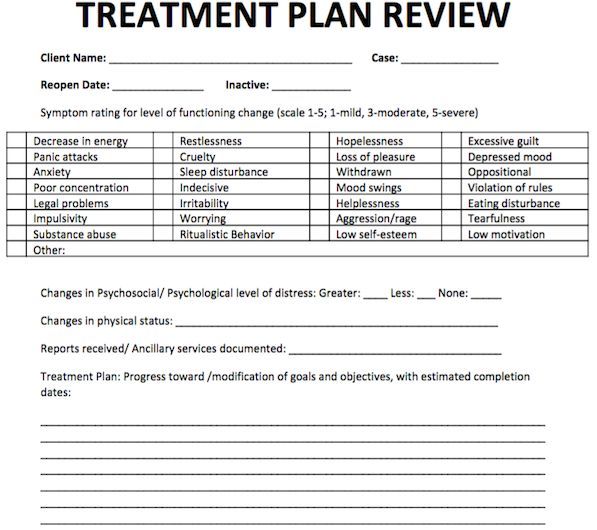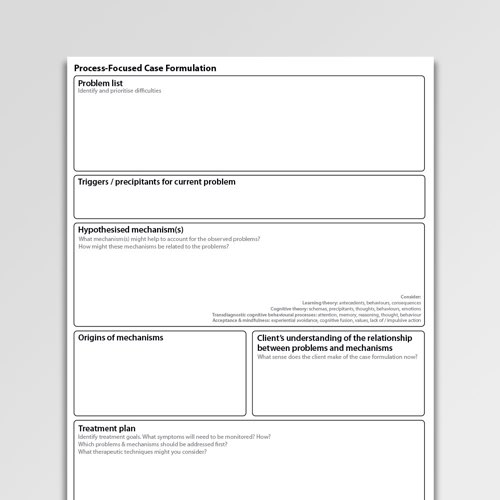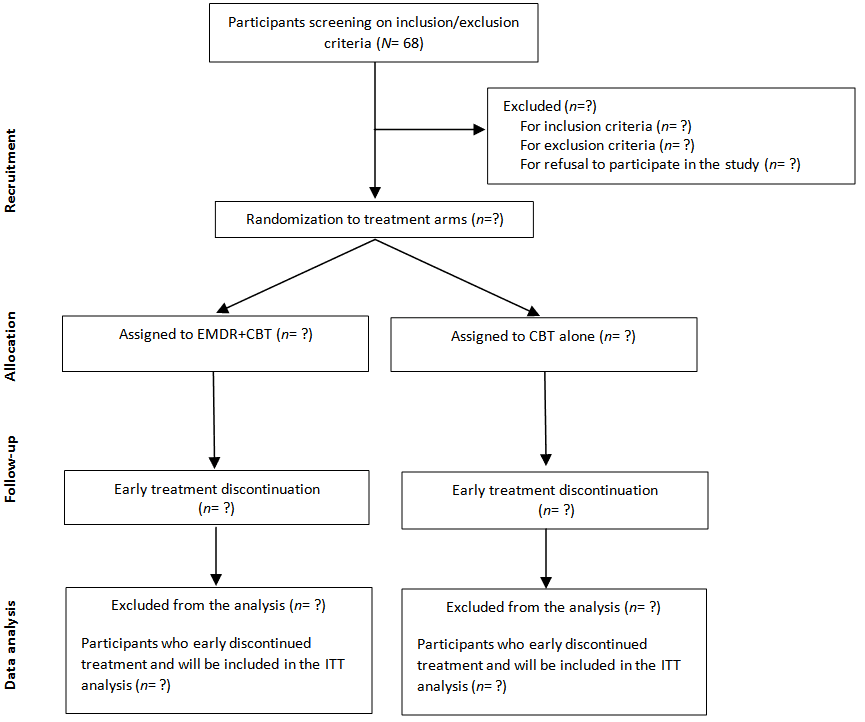Developing A Treatment Plan For Ptsd
Home » Blog » Developing a Treatment Plan for PTSD
Post Traumatic Stress Disorder is defined as a reaction to an extremely stressful event such as being a victim of violence, witnessing violence, combat, or any other extreme situation that caused the person to fear for their life or safety. PTSD affects more than eight million Americans and can cause significant co-morbidities such as depression, anxiety, and an increased risk for substance abuse and suicide.
PTSD treatments have improved as doctors and scientists have learned more about the disorder. Your doctor, therapist, or psychiatrist will work closely with you to develop a treatment customized to your needs, and they will monitor your progress.
Stages Of Cbt What Clients Can Expect
Clients who need help with overcoming their trauma can expect to go through a strategic set of steps to get the best care and treatment plan for their specific needs. Though there are many variations of how a psychologist will perform the stages of trauma focused CBT. Here we will be looking at the stages based on the Oxford Cognitive Therapy Trauma Groups PTSD treatment methods that have a body of evidence. This is also the type of trauma focused CBT you can expect to experience if you get treated at Quest Psychology Services. The stages are not always linear and are adapted to what suits the person best.
Finding Cbt For A Child
While there are many therapists trained in CBT, its important to look for one who has experience working with children. Here are some things to look for:
- Credentials. Look for a licensed counselor, family therapist, clinical social worker, psychologist, or psychiatrist. Licensure indicates a professional has met the legal standards to practice in your state.
- Experience. Look for a professional who has worked with children or adolescents.
- Transparency. Look for a professional willing to state goals and offer a treatment plan after an initial assessment or session with you and your child.
tips for finding a qualified mental health professional
Here are a few ways to locate mental health professionals with experience in CBT for kids:
- Ask your family doctor or pediatrician for a referral to a qualified CBT specialist.
- Ask family and friends who have used CBT.
- Ask your insurance company for a list of qualified providers of CBT that are in-network or will be part of your coverage.
Visit these websites for lists of qualified professionals in your area:
Don’t Miss: What Is 80 Disability From Va
Identify The Cause Of Ptsd
PTSD has various causes depending on an individual’s unique circumstances. Common causes of PTSD include traumatic events like physical or emotional assault, threat with a weapon, an accident or exposure to violent combat.
Although PTSD symptoms vary depending on the individual and their situation, they typically adhere to four categories:
How Does Cbt Work

CBT addresses the here and now of PTSD symptoms, it doesnt necessarily go back over the initial cause of the PTSD. That is something other types of therapies can explore with you. CBT helps you to adjust and re-align negative thoughts, feelings and behaviours that stop you from enjoying a good quality of life.
This is achieved by breaking down the big issues that affect your day, then creating small, achievable changes, including coping strategies or new ways of thinking and acting.
Trauma-Focused CBT has several main components, which are often represented by using the acronym PRACTICE.
There are other types of specialist talking therapy that put the emphasis on other aspects of healing, such as counselling which gives you a safe place to discuss a wider range of thoughts and emotions. Or Interpersonal Talking Therapy, which focuses on your relationship with family and friends.
Also Check: When Do Veterans Get Paid
Can I Do Cbt Online
Yes CBT can be accessed online with the help of either video calling or even chat messaging systems. It has been observed that online counseling provides almost the same results as face-to-face counseling and research backs it with evidence that people are likely to recover just as well with this method.
How Do I Choose A Therapist For Anxiety
You can contact your local hospital, mental health clinics, or counseling clinics for professionals to help you with anxiety. Nowadays various websites help you with finding suitable healthcare professionals for your needs. But it is important to check and ensure that the professional you have chosen is reliable and has the suitable experience to handle your concern.
Recommended Reading: How To Track My Disability Back Pay
Trauma Treatment Planning For Clinicians
“I can’t go on like this!” A client recently spoke these words to me when referring to symptoms of posttraumatic stress disorder . The impact of PTSD on quality of life cannot be underestimated.My former supervisor, Victor Carrion, MD, Director of the Stanford Early Life Stress Research Program, says PTSD is a disorder of fear extinction and it feeds on avoidance. I was his intern for two years, and later was hired to be one of two therapists in a 3 year clinical research trial of a cutting edge, short-term treatment for youth suffering posttraumatic symptoms.
We tested Stanford Cue Centered Treatment, a 15-18 session intervention with youth, ages 8-17, meeting with them in their schools. We had outstanding results, with participants having a 65% drop in posttraumatic symptoms very quickly, along with a 50+% decrease in depression and anxiety.
Categories of PTSD Symptoms
All of these symptoms sap a person’s energy. It is bad enough that they either witnessed or experienced trauma, and now they are having a host of unpleasant symptoms.
As clinicians it is our job to bring immediate relief. As a Stanford-trained trauma therapist, we began immediately by doing a thorough intake and assessment. Dr. Carrion says that the greatest mistake clinicians make is not asking about trauma, or if they do, they do not ask in enough detail.
Correct Irrational Thinking Which Leads To Ptsd And Interpersonal Problems
Objectives/treatment focus:
- Identify and address specific areas of cognitive distortion : anxiety , guilt, survivor guilt, blaming self for being a victim , catastrophizing:
- Challenge irrational thoughts with reality
- Use positive thinking and self-talk for dealing with anticipated problems or when confronting stressors
Read Also: What Conditions Automatically Qualify You For Disability
Resources Needed To Run Program
The typical resources for implementing the program are:
- Private space to conduct sessions
- Waiting area for children when parents are being seen
- Therapeutic books and materials
National Conferences CARES Institute, Allegheny General Hospital and onsite by request
Number of days/hours:
- Introductory Overview: 11 hour web-based course, TF-CBTWeb 2.0, available at:
- Basic Training: 23 days from an approved national TF-CBT trainer
- Ongoing Phone Consultation : groups of 5-12 clinicians receive ongoing case consultation from an approved national TF-CBT trainer or consultant to implement TF-CBT for patients in their setting
- Advanced Training: 13 days on selected topics relevant to the organization
More information is available at hhttp://tfcbt.org.
Understanding And Identifying Negative Thoughts
The events occurring in our lives impact our thoughts and feelings in the present and the future. To avoid or overcome any issues, we first need to identify the events that caused the changes in our thought processes. Because these events will help in identifying our negative thoughts.
For example, a person ended up falling three-step on stages while performing and now has fear of being embarrassed on stage again.
You May Like: Whiskey Barrel Flags Made By Veterans
A Summary Of Clinical Presentation
2 Eric Berne, in Transactional Analysis Theory, describes this as an adult authority figure using nurturing and/or critical guidance to another person in a manner to evoke subservient responses.
Citations”A Guide to Understanding Cognitive and Behavioural Psychotherapies” British Association of Behavioral and Cognitive Psychotherapies. Retrieved on 2007-1-1 2 Beck, A., . Cognitive Therapy and the Emotional Disorders, NY: Penguin, 1993. 3 Ellis, Albert . A New Guide to Rational Living. Prentice Hall. 4 Ellis, Albert . Overcoming Destructive Beliefs, Feelings, and Behaviors: New Directions for Rational Emotive Behavior Therapy. Prometheus Books. 5 Spicer, Jerry . The Minnesota Model: The Evolution of the Multidisciplinary Approach to Addiction Recovery. Center City MN: Hazelden. 6 Bandura, A. . Social Foundations of Thought and Action. Englewood Cliffs, NJ: Prentice-Hall. 7 http://www.minuchincenter.org. The Salvadore Minuchin Center for the Family. 8 Journal of Family Therapy. Special IssueFamily and Couple Interventions in Depression. 25:406-416, November 2003.
C 7 4 5 8 D i a g n o s i s a n d T r e a t m e n t P l a n n i n g Page 9Dr. David Moore Þ Argosy University-Seattle
Cbt For Ptsd In Children And Adolescents

PTSD is a common psychiatric condition in childhood and adolescence following traumatic events.71,72 CBT has been considered to be the first choice of treatment of PTSD in children and adolescents.73,74 The effectiveness and feasibility of CBT have been established even for preschool children with PTSD following a range of traumatic events. It has been concluded that young children can cooperate meaningfully in structured, trauma-related exposure exercises and can utilize relaxation techniques successfully. Highly anxious parents do not inhibit their childrens improvement per se, as long as they can facilitate the manual techniques.75 Studies of CBT in children comparing PTSD with EMDR and play therapy are methodologically more rigorous, having used manualized, reproducible treatment, and contain examples of group-based or school-based therapies.76
You May Like: Va Disability For Ptsd And Depression
What Is The Treatment Plan In Cbt To Help With Anxiety
CBT is a proven method to help with anxiety. CBT follows a certain treatment guideline to help the client recover.
- Analyzing the triggering events with the help of techniques such as thought monitoring or journaling.
- Identification of negative thoughts that lead to anxiety.
- Challenging and replacing that negative thought with the help of cognitive restructuring.
- Helping the clients get used to their feared situation or object by slowly increasing their tolerance through continuous exposure.
- Assisting the client in overcoming the symptoms associated with anxiety attacks through various relaxation techniques.
- Assigning homework to the client so that the client can practice their newly learned coping skills and techniques in real-life situations and help them prevent from relapsing.
- Once it has been ensured that the client is capable of handling things on their own only then the treatment is terminated.
Are The Treatment Plans Confidential
According to the Health Insurance Portability and Accountability Act , there is a rule that allows people in treatment to have privacy rights in terms of health information, particularly mental health. If someone wishes to share details, prepare a form that authorizes the informations release. And it should be signed by the patient or the parent of minor patients.
You May Like: Service Dog For Ptsd And Anxiety
Cbt For Ptsd From Witnessing Violence
Sarah, a 22-year-old who witnessed her younger brothers murder by gunshot, has been experiencing symptoms of PTSD for 3 years. She has recurrent nightmares of the murder, and she avoids the place where her brother died and thoughts about her brothers death. She reports continuous increasing ruminative thought and guilt surrounding her lack of protection of her brother, as well as irritability and depression throughout the year.
Sarahs PTSD symptoms have begun to seriously impact her work relationships and with her family. After being assessed for comorbid symptoms of grief and depression in addition to PTSD, Sarah would benefit from about 12 sessions of a combination of CBT and cognitive processing therapy.
Sarah begins seeing a therapist to process her symptoms and her traumatic experience. Her therapist begins challenging her in each session to use more healthy thinking patterns and to engage in coping techniques. When Sarahs anxiety levels rise, the therapist helps her by pointing out the unhealthy thought or increased stress response and allowing her time to practice restructuring her thoughts and engaging in a breathing activity or to relax her muscles.
Attention Deficit Hyperactivity Disorder
Children with ADHD may have a hard time sitting still and may engage in impulsive behaviors. While there are medications to treat this disorder, sometimes theyre not the first or only choice of treatment.
Even with medications, some children have persistent symptoms. that for some teens, adding CBT works better than medication alone.
Recommended Reading: Can You Get Social Security And Disability
Healthcare Professionals Who Treat Ptsd
With training, professionals who work in different areas of mental health can work with patients who have PTSD. Social workers, counselors and psychologists work with clients over the long term, helping them meet their goals. If medications are part of the treatment plan, these can only be prescribed by a doctor, most often a family doctor or a psychiatrist.
A psychiatrist can also provide psychotherapy, but its not unusual for someone to see a therapist for psychotherapy and a psychiatrist for the medication part of treatment. Some professionals work in teams so they can offer their clients a comprehensive approach.
Therapy can also be done alone, one on one, or in a group setting. Group therapy can be effective by helping people understand they arent alone. Sharing stories and experiences also helps.
Finding the right healthcare professional can sometimes take some trial and error. It is important that you feel comfortable with the person you are working with and that youre in an environment that makes you feel safe and willing to share your thoughts. Not all therapists and patients click though, so if you feel you arent able to establish a good relationship with your therapist, try to find someone else. It can be difficult to start over with another professional, but if you dont, you may find it hard to reach your treatment goals.
Treating Ptsd & Traumatic Experiences: Trauma
If Trauma-Focused Cognitive Behavioral Therapy has piqued your interest, there are some great resources out there to help you learn more about implementing this type of therapy in your own practice.
The Trauma-Focused Cognitive Behavioral Therapy website provides information on how to get certified in TF-CBT. There are eight steps that must be taken to achieve certification:
You can register for the test, contact TF-CBT page staff, and learn more about training at this link.
Don’t Miss: Can You Add Short Term Disability While Pregnant
Ii Basic Demographic Client Information
C 7 4 5 8 D i a g n o s i s a n d T r e a t m e n t P l a n n i n g Page 1Dr. David Moore Þ Argosy University-Seattle The key presenting issues are Ms. Clients efforts to develop a sustained addiction recovery that includes the level of behavioral health necessary to parent a 14 year old daughter who is on the Washington State early intervention program for truancy and delinquency .
Disorders Associated With Ptsd

Insomnia
Insomnia is one of the most common symptoms of PTSD and often persists after other symptoms have responded to CBT. In a study of patients who no longer met the criteria for a PTSD diagnosis following CBT for PTSD, 48% reported residual insomnia. However, for the large majority, insomnia persisted in the absence of continuing nightmares and hypervigilance. Experiencing trauma in a sleep-related context was associated with greater risk for residual insomnia.57 The response of insomnia to CBT treatment has been specifically addressed in some studies. The outcome of five sessions of cognitive-behavioral treatment for insomniac patients who responded to CBT for PTSD, but continued to report insomnia, suggested improvements on subjective sleep measures and self-monitored sleep efficiency in most cases.58 In one study, rape victims with PTSD who responded to CBT also had significantly decreased sleep disturbance following therapy.49
Physical conditions
Don’t Miss: Board Of Veterans Appeals Phone Number
